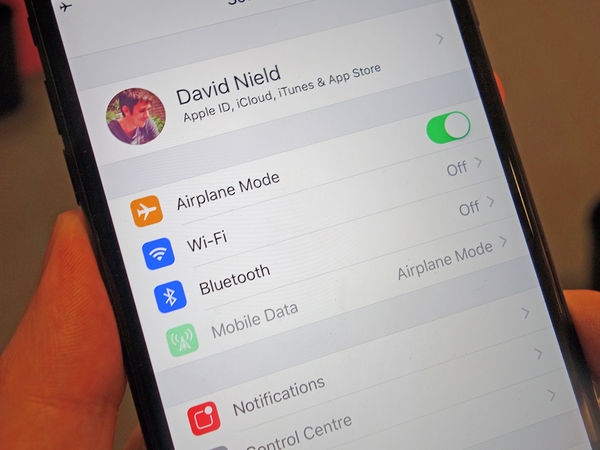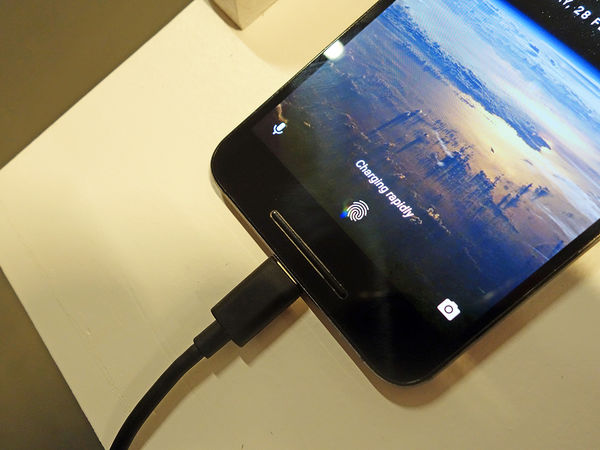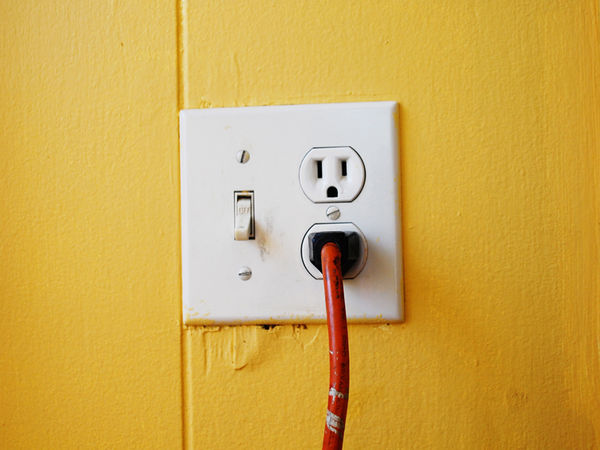


As our phones have become more and more powerful, with bigger and bigger displays, the battery packs inside them have only just managed to keep pace. It's still not uncommon to be looking for a charger at the end of the day, no matter what make or model of phone you've got.
1. Use Airplane Mode
One of the most effective ways of getting your phone to charge quickly, whether you're hopping between meetings or about to dash for the train, is to limit the amount of power it draws while it charges. And one of the best ways to do that is to hit the Airplane Mode button as soon as you plug it in.
This makes more of a difference than you might think. Without the draw of checking wireless connections, updating apps with alerts, and straining to stay connected to its cellular network, your phone draws much less power than normal.

David Nield/Popular Science
Even on the ground, Airplane Mode can come in handy
Think of charging your phone as being like filling a bath—the bath's going to fill up with water a lot quicker if there aren't any leaks in it and the drain is firmly plugged. There's the obvious downside that you won't receive any messages or calls while your phone is in Airplane Mode, but if you're only charging it for a few minutes, it's well worth the sacrifice.
In fact you might want to leave your device in Airplane Mode even after you've finished charging it up. The battery's going to drain much slower if your phone's cut off from the outside world. And as an added bonus, you're less likely to get interrupted during a meeting. You might find you don't need to check Twitter that much after all...
2. Don't check your phone
We've mentioned Airplane Mode, but actually, anything that you normally do to save battery power while you're out and about will also improve charging times when your phone's plugged in. That includes resisting the temptation to check your phone every five minutes to see how high the battery level has risen.
Those big, bright displays on modern-day smartphones are pretty demanding as far as battery life goes, so resist the temptation to check for alerts or indeed do anything else with your phone while it's being topped up. Plug it in, then forget about it until you need to head out again (or go down the hall to the next meeting).

David Nield/Popular Science
Do...not...unlock...
If you can't bring yourself to put your phone in Airplane Mode (see above), then another option is to put it face down on a desk and mute notification sounds, so you'll be less tempted to pick it up and start flicking through your emails. Ten minutes of interrupted charging will get your battery to a much higher level than ten minutes of charging while web browsing and making calls to colleagues.
The same rule applies for anything that's going to put demands on your phone's battery, so no gaming, watching movies, streaming audio, or flicking through your photo albums while the phone's plugged in. If you've found a few minutes to charge your phone then you might well be looking for a distraction—but read a book instead.
3. Plug into a wall socket
Being able to charge your phone from a laptop is of course very handy if you don't have a wall socket nearby. But the amount of juice your phone's going to get from a USB socket is nothing compared to what a wall socket can offer—though exact rates vary depending on the tech involved.
If you must charge over USB, then find a computer that's as new as possible, because successive USB standards have increased the power capacity available to devices. Again, it depends which device you're plugging into which power source (as manufacturers take different approaches), but the newer the better.

The wall socket is your friend. Use it.
Ultimately what all of that means is that five minutes plugged into the wall is usually going to be much better than five minutes plugged into your laptop. So if you have the option, go for the wall socket.
It's also a good idea to stick to the charger bundled with your phone, or at least a reputable replacement, where you can. Chances are this cable has been manufactured to get your device charged up as efficiently as possible, and third-party replacements may not be pumping your phone's battery with as much juice as it can handle.
4. Buy a quick-charging phone
Quick-charging technology is just about everywhere except the iPhone (for now). If you want a phone that can get back on its feet after just a few minutes' charging, look for one that offers the feature the next time you're in the market for a new handset.
Qualcomm's Quick Charge is one of the most competitive technologies out there, and the most recent version 4.0 is likely to be supported by a number of phones launching this year. Some manufacturers have their own variations—the Dash Charge tech on the latest OnePlus flagship, for example, promises to get your phone's battery from 0 to 90 percent in an hour.
OnePlus
The OnePlus's fast-charging cable
As always, take trusted reviews over manufacturers' claims when it comes to believing those sorts of statistics—but quick-charging technology is real and more than a gimmick. It may not help you charge your current phone faster, but bear it in mind next time you purchase a new device, and make sure the supplied charger is quick-charge-ready, like the phone it's powering.
If you're happy to spend some money, but don't want to ditch your current phone just yet, then a portable charger could be the way forward. You can buy charging blocks from the likes of Mophie and Anker in all kinds of capacities, so your phone can be filling up on power even when it's stuffed inside a drawer or at the bottom of a bag. The only problem is that you then need to charge your charger...

EDITOR'S PICKS









